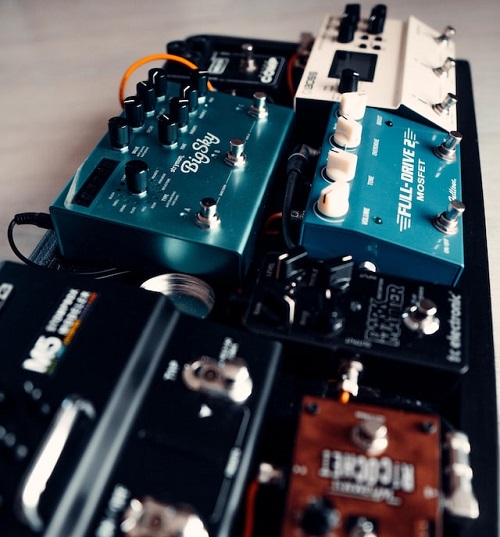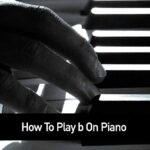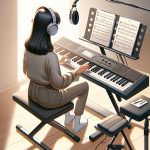Music passes through a computer program before it makes its way to our ears. Programs such as Cubase, Logic, Protools, Ableton or Studio One allow musicians to edit and fine-tune their recordings before releasing them to the public. Without these programs, many songs would never make it to our radios or streaming services.
In addition to the traditional instruments that we think of when we think of music, many of the sounds that we hear in music are actually made from electronic instruments. These instruments use a variety of techniques to create sound, including synthesis and sampling. By using these techniques, composers are able to create new and unique sounds that would not be possible with traditional instruments.
So, it seems logical that if you're playing a gig where you're covering someone else's music, you probably won't be able to get through the whole night without at least some understanding of how to create programmed sounds. This is especially true if the artist whose music you are covers relies heavily on computer-generated sounds in their own performances.
What Is Reverb?
Reverb simply creates the illusion of being in a space other than where the musician or listener is actually located. The sound of reverb adds depth and dimension to an audio signal, making it seem as though the signal is coming from within a room, hall, or other enclosure. Ambience can also be simulated using delays, which create the impression of hearing a sound from a distance.
The sound we now know as reverb was once made by piping sound into a room that was equipped with different microphones at altering distances from the signal source. This allowed for the sound to be captured and then played back with an echo, which gave the illusion of the sound being played in a large space. The recorded sound was then mixed back in with the original sound. This allowed the listener to hear the recorded sound as if it were coming from a different space. This created a more immersive experience for the listener.
Reverb Now
Thanks to modern technology, we can now create reverb using software which is much more efficient and doesn't require as much space. We have a lot of plug-ins that mimic the similar sound for us. I highly recommend that you utilize Ableton's stock reverb. It has a wide range of uses and can really add depth and dimension to your tracks. By using the stock reverb, you will be able to get a feel for what it can do and how it can enhance your music. Once you have a good understanding of how it works, then you can start experimenting with different third party plug-ins. Aside from Ableton's, you can also check out Valhalla Vintage Verb if you are searching for good reverbs.
Goals Of Reverb As An Effect
Today, we'll go over some tips for getting the most out of your piano sound by using a reverb effect. In this instance, we are aiming for a more atmospheric sound, and so a little bit of noise can actually work in our favor.
Reverb can help give your piano playing a sense of space and depth, making it sound more natural and realistic. By adjusting the settings on your reverb pedal or plugin, you can control how pronounced the effect is. A longer decay time will create a more lush, washing sound, while a shorter one will be more subtle and reserved. Experiment with different settings to see what sounds best with your playing style and the music you're making.
Our first goal: Create Atmosphere
The echoey, expansive sound can make listeners feel as if they are on the edge of their seats, eagerly awaiting the next note.
Our second goal : Add Warmth
A gentle reverb can make your piano sound fuller and warmer and can be ideal for slower pieces or ballads. This also makes the singer feel more supported and helps them to project their voice better.
Our third goal: Adding sustain to unsupported lead lines
With a few simple techniques, you can add amazing sustain to your unsupported lead lines and make them greater sounding. By adding reverb, you can add depth and dimension to your music which can be useful for thin-sounding or brittle tracks. If you want to add a little more interest to your music, try using reverb to emphasize certain parts of the melody.
The What’s And Why’s
Input Processing: The reverb processor can be set to remove high frequency content, low frequency content, or a combination of both from the signal that is being processed.. This will allow you to customize the sound of your reverb to get the perfect tone for your needs.
Spin: The size of the room and how many times the signal is reflecting off the walls will affect how long it takes for the sound to decay. In a small room with few hard surfaces, the sound will die away quickly. However, in a large room with lots of hard surfaces, the sound will take longer to decay.
Size: I have to turn my size all the way up in order to get an extra spacious pad sound. This involves turning my wet and dry mix up at the same time.
Stereo: This setting on your reverb control determines how wide the effect will sound. At the 120 setting, the left and right channels of your stereo field each receive a different signal. This creates a more spacious, reverberant sound.
Diffusion Network: The diffusion network found on many reverb units allows you to more finely control the frequencies of your reverb tail. By boosting or subtracting different frequency bands, you can shape the overall tone of the reverb to better match your needs.
Density and Scale: Your sound gets darker as the knobs are turned higher.
Decay: The duration of time in seconds it takes for the reverb to completely diminish. The decay time is an important factor in determining the overall sound of the reverb. A longer decay time will result in a more pronounced reverb, while a shorter decay time will result in a more subtle reverb.
Reverb is one of the most important effects for keyboards, and today we're going to be talking about how to use it to get the most out of your live performance. Reverb can be used to add depth and space to your sound, or it can be used to create a sense of atmosphere. It's also an essential tool for creating dynamics in your performance. Try adding different embellishments to your playing to add interest, such as trills, rolls, or vibrato. You can also experiment with different dynamics to create a more dramatic effect. Use your imagination and have fun!
Harlan Kilstein began playing piano during covid with no piano background at all. He taught himself how to play learning what to do and what not to do.
Today he's an advanced intermediate player and can help you grow in your skills because he learned all this on his own.








